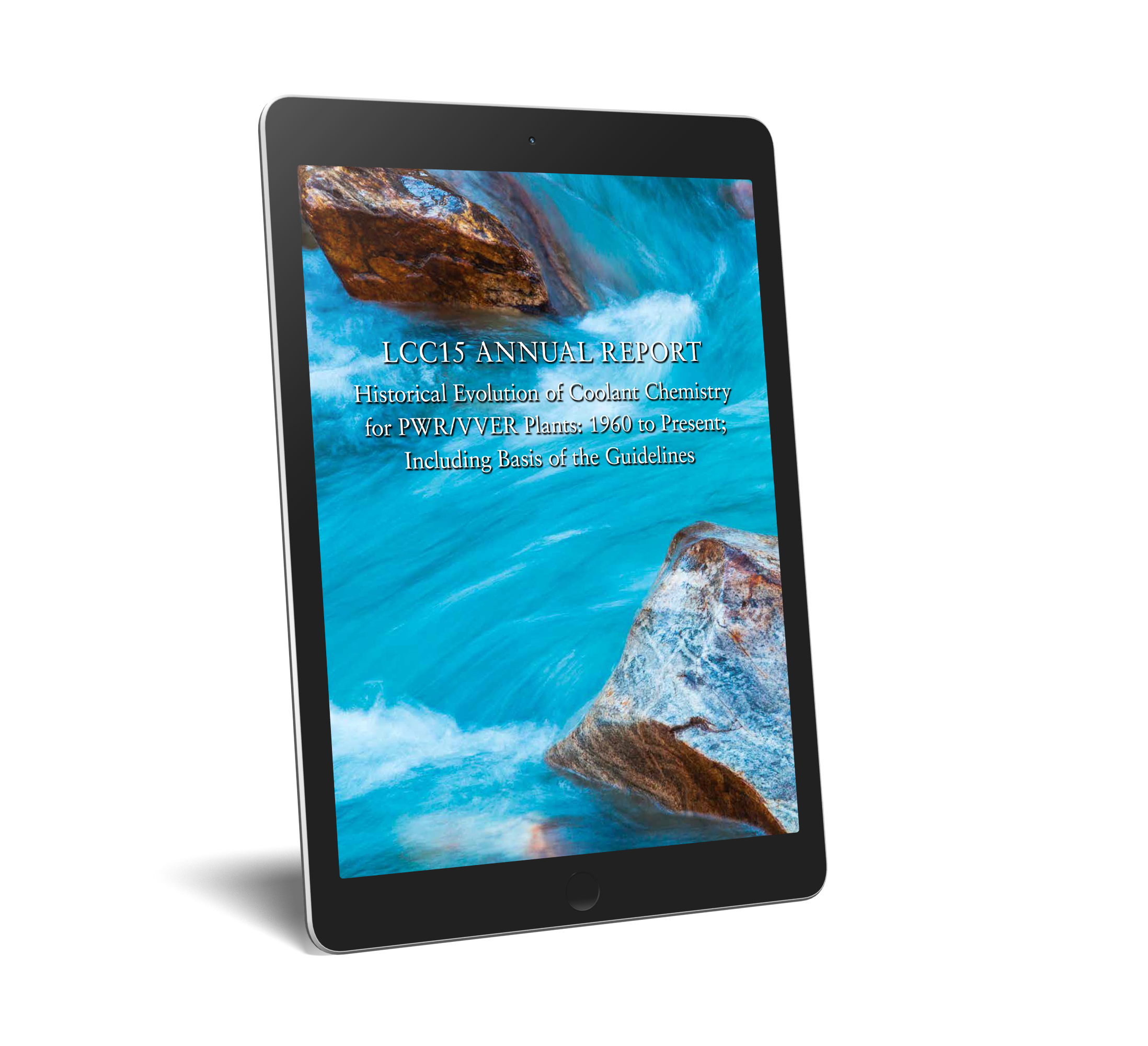
This report describes the historical development of the water chemistry in primary side of the PWR and VVER plants since 1950s up to present. Starting with the first research PWR plants in USA without applying any water chemistry addition of neither alkaline reagent nor hydrogen, lot of fuel performance degradations were experienced in 1950s and 1960s, such as heavy fuel deposits, flow restrictions across the core, reactivity losses and high radiation fields. Even the first AOA indications were experienced in a PWR with low core duty operating without applying water chemistry treatment.
Due to all these degradations experienced at field, intensive root cause analysis and research work were performed to mitigate and counteract these degradations. These investigations revealed also the influence of the structural materials, especially the steam generator tubes, on the experienced degradation phenomena. Based on the field experience and the results of the investigations with respect to plant corrosion and radiation performance in the primary circuit, the water chemistry for primary circuit had to be modified and improved stepwise to counteract these performance degradations. In this report, the root cause of the experienced degradations will be discussed and the water chemistry mitigation steps will be explained. This explanation includes also how the concentration of the coolant chemistry additives, e.g. dissolved hydrogen and lithium hydroxide and also the strategy of their application was changed with time. Especially, the improvements of the coolant chemistry by Utilities was stringently necessary after 1990s due to economical reasons in the light of the trend towards extended fuel cycles, higher duty core, increasing stringent dose rate control, decreasing the refuelling outage duration, and reducing operating cost.
These improvements were reflected also in continuous modifications of the coolant chemistry guidelines. However, these modifications in international coolant chemistry guidelines (e.g. EPRI, EdF, VGB, MHI and VVER coolant chemistry guidelines), were somehow not exactly the same based on the used structural materials, and the field experienced gained with the plants. In this report, existing guidelines (especially EPRI, EdF and VGB guidelines) will be described in comparison with each other. The similarities and differences in these guidelines and the reasons for these differences will be explained. Finally, recommendations will be given with respect to application of the coolant chemistry strategies with a specific focus on the optimum lithium and hydrogen concentration during the fuel cycle based on the core duty design of the plants, the fuel cycle length and the structural materials used in the reactor coolant system.
The advantages and inconveniences of KOH versus LiOH for PWRs and VVERs will be discussed.
This report is intended to provide a detailed background description of the PWR/VVER Primary Side Coolant Chemistry for more understanding of the coolant chemistry strategies and the chemistry guidelines. Furthermore, it should provide a strong support to the utilities for establishing a responsive plant specific chemistry program. It may also help the Manufacturers and Regulators at having a detailed approach of primary water chemistry and corresponding issues.
